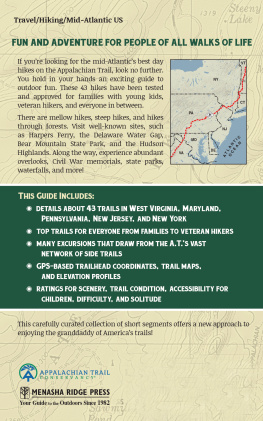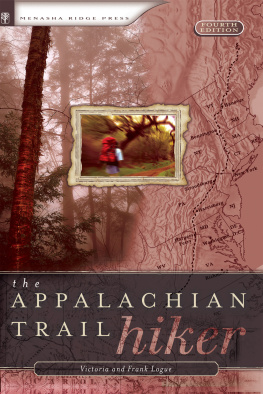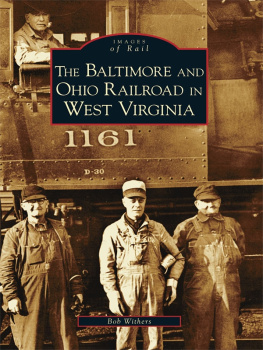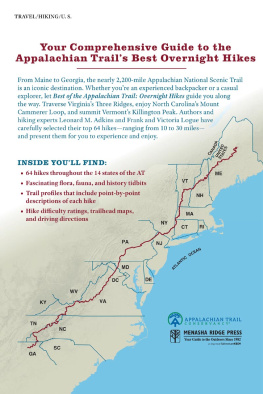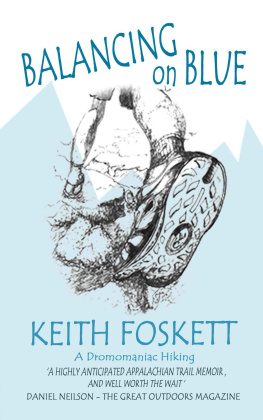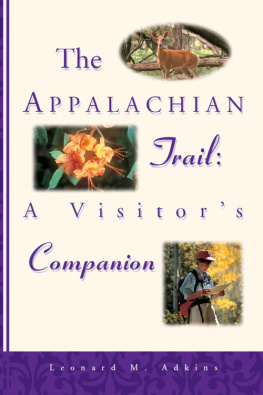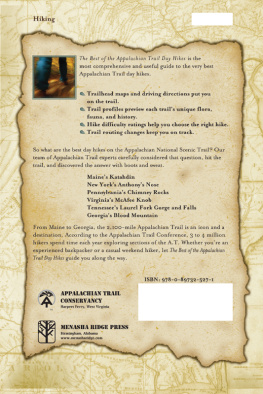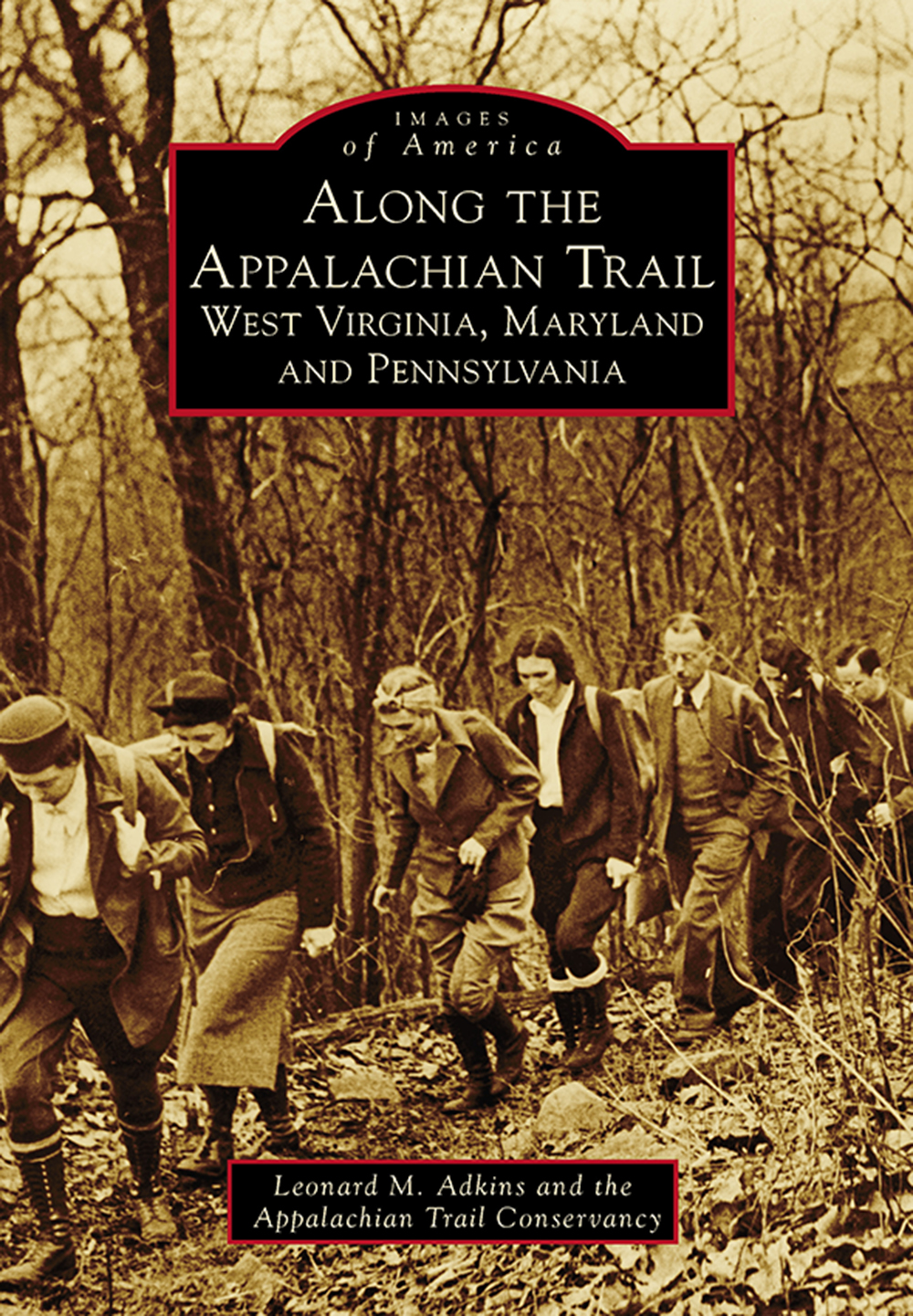
IMAGES
of America
ALONG THE
APPALACHIAN TRAIL
WEST VIRGINIA, MARYLAND
AND PENNSYLVANIA
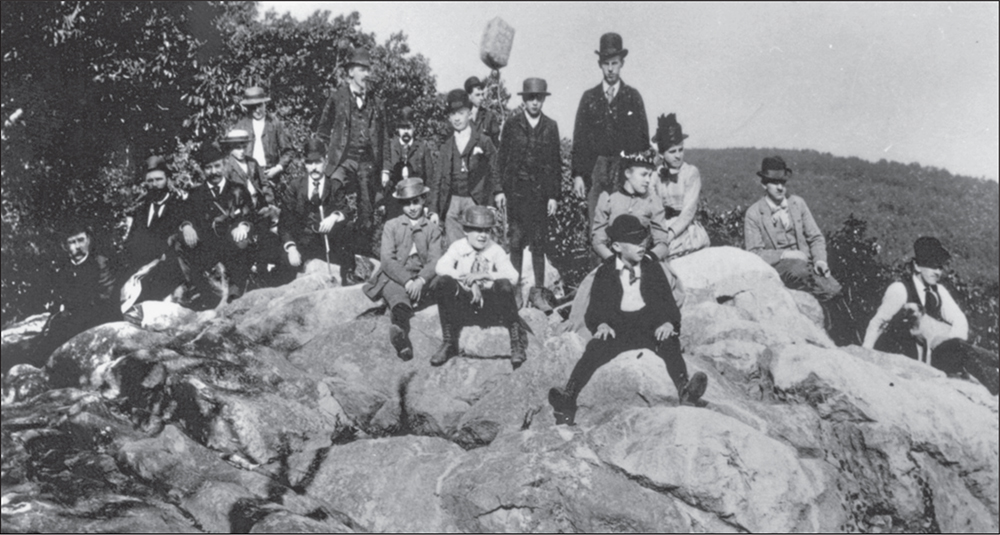
Marylands South Mountain has been a popular destination since the 1800s. The photographs exact date is unknown, but photographer John Davis Byerly was active from the 1860s to the 1890s. Born in Pennsylvania, Byerly moved to Frederick, Maryland, in 1842 and became one of the states first daguerreotypist. (Courtesy of MSA.)
ON THE COVER: Abbie Rowe, a photographer and member of PATC, wrote this caption concerning his 1930s photograph, Many occupations and professions are represented in the membership of the Washington, DC, Appalachian Trail Club. Here they cover a section of trail in southern Pennsylvania. (Courtesy of PATC.)
IMAGES
of America
ALONG THE
APPALACHIAN TRAIL
WEST VIRGINIA, MARYLAND
AND PENNSYLVANIA
Leonard M. Adkins and the
Appalachian Trail Conservancy

Copyright 2015 by Leonard M. Adkins and the Appalachian Trail Conservancy
ISBN 978-1-4671-2326-6
Ebook ISBN 9781439651223
Published by Arcadia Publishing
Charleston, South Carolina
Library of Congress Control Number: 2014951588
For all general information, please contact Arcadia Publishing:
Telephone 843-853-2070
Fax 843-853-0044
E-mail
For customer service and orders:
Toll-Free 1-888-313-2665
Visit us on the Internet at www.arcadiapublishing.com
As Myron Avery said, The trail, as such, will never be completed. A big thank-you goes to the tens of thousands who labored, and continue to do so, to make the Appalachian Trail one of Americas finest outdoors resource and the worlds most famous footpath.
A portion of the authors royalties from Images of America: Along the Appalachian Trail: West Virginia, Maryland, and Pennsylvania will be donated to the Appalachian Trail Conservancy.
CONTENTS
ACKNOWLEDGMENTS
My name may be on the cover, but the following made the book possible: Brian King (ATC), Barbara Wiemann (AHC), Allen Britton (BHC), Rita Flori (BMECC), Richard Tritt (CCHS), Lori Rohrer (DWGNRA), Shanna Klucar (KTA), Maria Day (MSA), Rosalind Suit (MCM), Tom Johnson (PATC), Deborah Lamb (PTC), Sharon Shellenbergr (SATC), Joan March (WTC), and John Seville (YHC). Laurie, you are my inspiration.
KEY TO ABBREVIATIONS USED THROUGHOUT THE TEXT:
AHCAllentown Hiking Club
ALDHAAppalachian Long Distance Hikers Association
ATAppalachian Trail
ATCAppalachian Trail Conference (Appalachian Trail Conservancy)
BHCBATONA Hiking Club
BMECCBlue Mountain Eagle Climbing Club
CCHSCumberland County Historical Society
DWGNRADelaware Water Gap National Recreation Area
KTAKeystone Trails Association
MCMMountain Club of Maryland
MSAMaryland State Archives
NPSNational Park Service
PATCPotomac Appalachian Trail Club
PTCPhiladelphia Trail Club
SATCSusquehanna Appalachian Trail Club
WTCWilmington Trail Club
YHCYork Hiking Club
INTRODUCTION
Although other people had put forth similar ideas, Benton MacKayes article An Appalachian Trail: A Project in Regional Planning, which appeared in the October 1921 issue of the Journal of the American Institute of Architects, is regarded as having provided the impetus for the Appalachian Trail. MacKaye saw that postWorld War I America was becoming urbanized, machine-driven, and removed from the natural worlds positive and reinvigorating aspects. In addition to recreational opportunities, he also envisioned the trail connecting a series of permanent, self-sustaining camps where cooperation replaces antagonism, trust replaces suspicion, emulation replaces competition.
Encouraged by many, MacKaye spread the Appalachian Trail idea to just about anyone who would listen. The idea struck a chord, and in October 1923 the first few miles of trail to be built specifically for the AT were opened in the Harriman-Bear Mountain State Parks of New York by the recently formed New York-New Jersey Trail Conference. The Appalachian Trail Conference (changed to Appalachian Trail Conservancy in 2005) was created in March 1925 as the umbrella organization to oversee efforts to build, maintain, and protect the trail.
With PATCs establishment in 1927, and the appointments (in 1928) of Arthur Perkins as chairman and Myron Averya founding member of PATCas the assistant chairman of ATC, the pace of the trail construction rapidly accelerated. Avery took it upon himself to recruit volunteers and spread the word about the AT. Within four years, PATC had constructed more than 250 miles of trail in Virginia, West Virginia, Maryland, and western Pennsylvania.
In 1916, five years before MacKayes AT article appeared, Dr. Harry F. Rentschler, a physician from Reading, took an informal group on a hike to an eagles nest in eastern Pennsylvania. Later that year, he and members of that group formed BMECC. Concerned that construction of the AT in eastern Pennsylvania was lagging, Lafayette College professor Eugene C. Bingham met with the club in 1926 to urge them to begin work on a Skyline Trail. Rentschler and BMECC rose to the challenge and, despite lack of public land on which to locate the pathway, completed construction of 102 miles of the AT from the Susquehanna River to the Lehigh River by 1931.
Also predating the AT, the Pennsylvania Alpine Club dedicated the Darlington Trail from close to the Cumberland Valley to the Susquehanna River in 1908. The club was one of the original AT maintaining clubs, but when the majority of the Darlington Trail was passed over as a part of the AT, the club felt it needed to remain loyal to its original footpath.
In addition to the clubs that currently maintain the AT in West Virginia, Maryland, and Pennsylvania that are profiled in this book, many other organizations that have overseen the welfare of the trail have come and gone. Among the many in Pennsylvania were the Brandywine Valley Outing Club, which maintained the trail through the Saint Anthonys Wilderness, and the Alpine Club of Williamsport, with maintenance responsibility from Fox Gap to Wind Gap (it currently maintains the 59-mile Loyalsock Trail). Boy Scout Troop 67 oversaw the route from Tri-County Corner to Rausch Gap, and the American Nessmuk Society took care of three miles near Port Clinton, Pennsylvania. The trail between the Delaware Water Gap and Fox Gap has been maintained by several organizations, including BMECC, Lafayette Colleges Alpha Phi Omega, and Springfield Trail Club. Even businessmen saw the ATs (at least the economic) value as the Delaware Water Gap Chamber of Commerce once helped maintain the trail through their region.
On August 14, 1937, less than 16 years from the publication of MacKayes article, the AT was a reality, a continuously marked footpath from Georgia to Maine. This feat is made more remarkable when it is remembered that nearly every bit of effort expended was done so by volunteers whose only real motivation was a love of the outdoors and whose sole compensation was the satisfaction of having contributed to the successful completion of such a noble project.
Americas attentions were, of course, concentrated elsewhere during World War II, and the trail fell into disrepair and became displaced along many miles of its route. Recognizing the fragility of the pathway, Daniel Koch (a member of the ATC board, president of the Blue Mountain Eagle Climbing Club and, most importantly, an elected member of Congress) introduced, in 1945, legislation in the House of Representatives to establish a system of federally protected footways. Unfortunately, the bill never made it out of committee. The same was true for similar legislation introduced in 1948.
Next page

